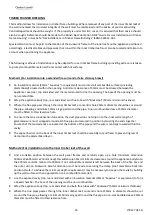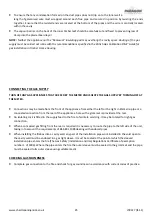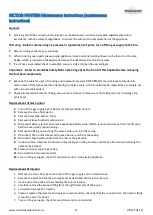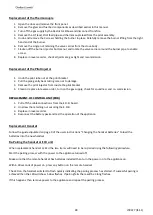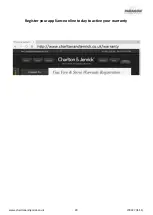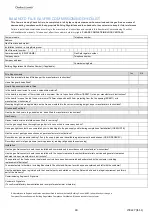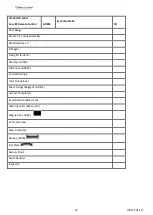
www.charltonandjenrick.co.uk
25
LT8227 (ISS 1)
•
To ensure that any condensation formed on the duct pipes does not drip on to the inner wall a
length of galvanised wire must wrapped around each flue pipe and secured in position by twisting the ends
together. Ensure that the twisted ends are located at the bottom of the pipes and the wire is centrally located
within the cavity.
•
The vapour barrier on the back of the inner timber leaf should be carefully cut and fixed to prevent ingress of
damp into the plasterboard layer.
NOTE:
Neither the appliance nor the “Rockwool” insulating pad may overhang the cavity space. Routing of the gas
supply must be carrie
d out inline with the recommendations specified in the British Gas Publication DM2 ‘Guide for
gas installation in Timber Frame Housing.
CONNECTING THE GAS SUPPLY
TURN OFF ANY GAS APPLIANCES THAT ARE FED BY THE METER AND ISOLATE THE GAS SUPPLY BY TURNING OFF AT
THE METER.
•
Connections may be made from the front of the appliance from either the left or the right in 8mm-dia. pipe or a
concealed connection from the rear of the appliance a hole with a grommet is provided at the rear.
•
An isolating cock is fitted in the supply feed to the fire to facilitate servicing. It may be rotated for right gas
connection.
•
When a concealed gas fitting from the rear is required it is necessary to route the pipe to the left side of the unit,
taking into account the requirements of BS 6891 1988 dealing with enclosed pipes.
•
When installing the firebox into a cavity wall, any part of the installation pipe work installed in the void open to
the cavity wall must be enclosed in a gas tight sleeve. It must be sealed at the point at which the sleeved
installation pipe enters the fire (The Gas Safety (Installation and Use) Regulations Certificate of exemption
number 1 of 1996).
Where the pipe enters the fire the outer sleeve must be sealed to the grommet and the pipe
must be sealed to its outer sleeve using suitable mastic.
CHECKING GAS SOUNDNESS
•
Complete gas connection to the fire and check for gas soundness in accordance with current codes of practice.














